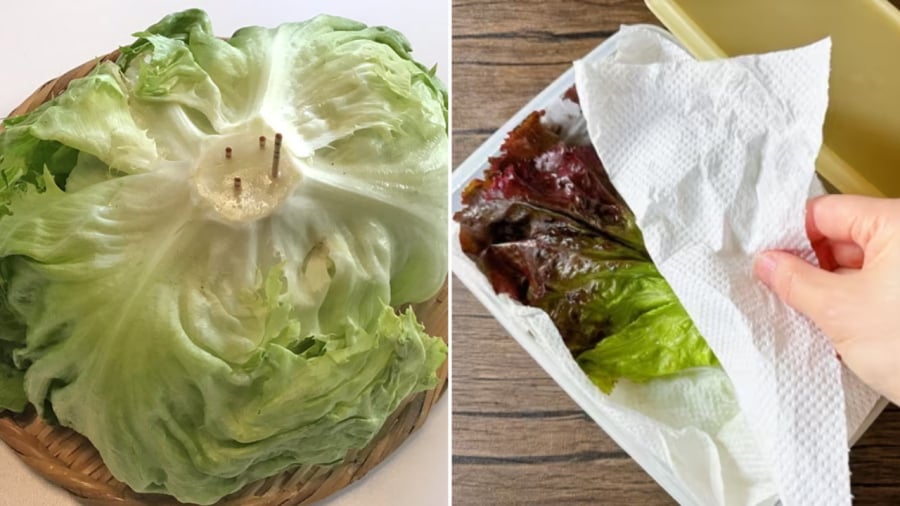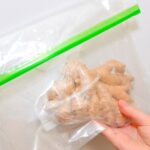Lettuce is a familiar vegetable often consumed raw. It is commonly used for wrapping grilled meat, grilled spring rolls, boiled meat, or making salads. Lettuce leaves are delicate and prone to bruising and rotting. Therefore, knowing how to properly store lettuce is essential to keep it fresh for extended periods.
Do Not Wash Lettuce Before Storing
Lettuce is a delicate vegetable and prone to rotting. If washed before storage, the leaves will quickly spoil due to the moisture remaining on them.
Thus, freshly purchased lettuce only needs to be dried and then stored.
Tips for Storing Lettuce
- Use Paper Towels for Storage
To absorb moisture and keep the lettuce dry during storage, consider using paper towels. Line the bottom of a container or bag with a paper towel and place the lettuce inside. You can also cover the lettuce with another paper towel. This will help absorb excess moisture and maintain optimal humidity levels to keep the lettuce fresh.
- Use Toothpicks
When storing lettuce, have some toothpicks handy. Using three toothpicks, pierce the stem of the lettuce in a triangular pattern. Push the toothpicks deep into the stem, leaving only a small portion exposed. This method helps retain moisture, keeping the lettuce crisp and fresh for longer.
By using this toothpick technique, you can expect your lettuce to stay fresh for about a week.

- Vase Storage
If the lettuce stems are long enough, you can treat them like a bouquet of flowers and place them in a vase of water to keep them fresh. The lettuce will absorb water and maintain its freshness for several days, retaining the vibrant green color of its leaves.
- Use Plastic Wrap
Another option is to wrap the stems of the lettuce with plastic wrap. Ensure the stems are dry before wrapping them tightly. This method reduces the escape of ethylene gas, keeping the lettuce fresh for a longer period.
Growing Your Own Lettuce at Home
If you’re passionate about gardening and interested in growing your own lettuce at home, it’s a fairly simple process. You’ll need some plastic containers, boxes, or pots with holes drilled in the bottom to ensure proper drainage and prevent waterlogging.
Lettuce seeds can be purchased from gardening stores, supermarkets, or online retailers.
The soil for growing lettuce should be loose and rich in nutrients. Mixing in some organic fertilizer can further enhance the quality of the soil.
Sow the seeds directly into the soil, spacing them about 10-15 cm apart to allow for future growth. Cover the seeds with a thin layer of soil and water gently. Place the container in a cool, shaded area and wait for the seeds to germinate.
Lettuce thrives in various environments and doesn’t require extensive care. Daily watering in the morning and evening is usually sufficient, and additional fertilizer is typically unnecessary. To boost the nutritional content of the soil, consider using diluted fermented rice water. However, be careful not to overwater, as this can lead to root rot.
Within 30-45 days of sowing the seeds, your lettuce should be ready for harvest. Gently lift the lettuce out of the soil by its roots, or cut the leaves close to the root to allow for regrowth and continued harvesting.
Keep Your Meat Fresh for Longer: The One Extra Step You Need to Take Before Refrigerating
Preserving meat for extended periods has always been a challenge, and most people tend to resort to freezing or refrigerating it to maintain freshness. However, this common practice can lead to bacterial contamination, affecting both health and the longevity of the meat. The following guide will reveal innovative ways to keep your meat fresh and edible for much longer, ensuring a healthy and tasty experience.






































